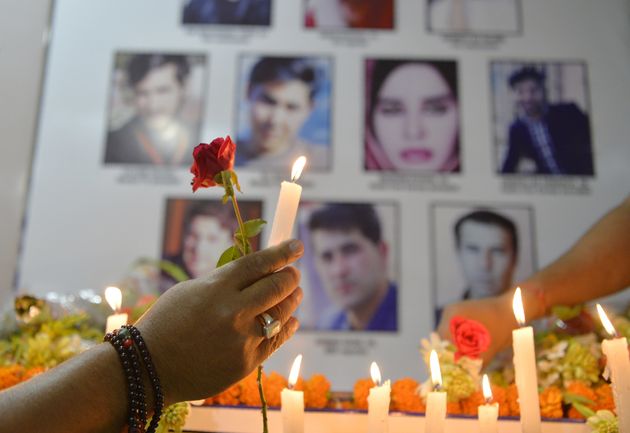
Last week 13 journalists and staff working for Turkey’s Cumhuriyet newspaper were convicted of terrorism-related crimes and given sentences that ranged between two and a half and eight years. The defendants and their lawyers told the court, ‘journalism is not a crime’, but in Turkey, where there are more than 174 journalists and media workers in prison, it would appear that it is.
Today is World Press Freedom Day, a day to both celebrate press freedom and defend the media from attacks. Increasingly, it would appear that we are doing more of the latter than the former. One of the trends that we at ARTICLE 19 have observed in our work around the world, is that most journalists, wherever they are reporting, are facing an increasingly hostile environment .
The threats they face vary in nature and severity, from censorship, legal threats and online abuse to arrests, violent attacks and even murder. The exact causes and set of circumstances may differ, but the underlying hostility to journalists everywhere is undermining their ability to report on matters of public interest.
In Europe, a supposedly safe environment for the press, several journalists have been murdered in the last year. In Malta, the tenacious investigative journalist Daphne Caruana Galizia was killed by a car bomb in October 2017. Earlier this year, Jan Kuciak and his fiancee, Martina Kušnírová, were murdered in Slovakia. Kuciak had been investigating mafia activities in the country.
Over the last 30 years, the Internet, technology and social media have transformed the way we communicate. It is increasingly difficult for authoritarian regimes to stop the free flow of information. More and more ‘citizen journalists’ have the power to share their stories and hold the powerful to account. The wide adoption of freedom of information laws are opening up government information to the public. A globalised world means global journalism, with major stories, such as the Panama Papers and the Snowden leaks, being broken by journalists from different countries and different media outlets.
This should be a golden age for journalism, freedom of expression and transparency. Instead, journalists are still facing the same old challenges, such as state censorship, as well as some new ones, including online abuse, digital surveillance and a failure to recognise the rights of bloggers and citizen journalists.
During this time period, there has been a global shift to democracy, and theoretically more open government. However, this progress is not necessarily being matched by a rise in free and open media.
In Myanmar, there was tremendous optimism that the National League for Democracy-led government, elected in 2016, would deliver the reforms needed for a free and open press. Instead, as with the previous military regime, they have continued to use repressive laws to silence those who are trying to hold them to account. Violations include the arrest of two Reuters journalists Wa Lone and Kyaw Soe Oo, arrested for their investigations into the Myanmar army’s massacre of Rohingya men. If convicted under the Official Secrets Act, they could face up to 14 years in prison.
Elections, the cornerstone of democracy, are proving to be a particularly dangerous time for journalists. In Kenya there were huge spikes in press violations during the general elections in August and October last year. Journalists were threatened, attacked, arrested and denied access to events of public interest.
In more established democracies, tolerating online abuse is part of a daily diet for journalists, particularly women, racial minorities and those identifying as LGBTQI.
A catalyst for the increase in online hostility towards journalists, is of course President Trump, who since he announced his candidacy for President, has posted almost 1,000 tweets criticising individual journalists or media organisations.
Thanks to the First Amendment, US journalists were considered to be the best protected in the world, but even there the threats have become so great that a group of press freedom organisations, including ARTICLE 19, undertook a visit to assess the situation earlier this year. The subsequent report, published today, identifies a worrying situation for national and local media outlets. Many of the problems, such as the failing Freedom of Information system or excessive use of national security laws to prosecute whistleblowers, pre-date Trump. However, his personal attacks on journalists and dismissal of the media as creators of ‘fake news’ are contributing to an environment, which will impact the ability of journalists to hold the powerful to account and report on issues of public interest. The ‘fake news’ mantra has also been used by Syria’s President Bashar al-Assad and Venezuela’s President Nicolás Maduro, among others, to rebuff criticism.
The environments identified in this article are just a handful of the many other hostile situations for journalists working in countries from Mexico to Bangladesh. The result has seen the much more pervasive and difficult free speech issue that is very hard to document: self-censorship.
In a speech last year, the Turkish novelist Elif Shafak, said that self-censorship, “is a very difficult subject to talk about because it is also embarrassing. What do you do with the kind of fear that you internalise? How do you deal with the kind of pressure that comes from within? Not necessarily from above, from authorities, but something that you have swallowed, made part of your daily life.”
How do we measure all that has been or will be left unsaid and not reported because of fear? Against a climate of abuse, legitimised by politicians, it could be that self-censorship is the biggest threat of all.
Thomas Hughes is the Executive Director of ARTICLE 19
Correction: an earlier version of this blog said there were “250 journalists and media workers in prison in Turkey”. The correct number is 174.